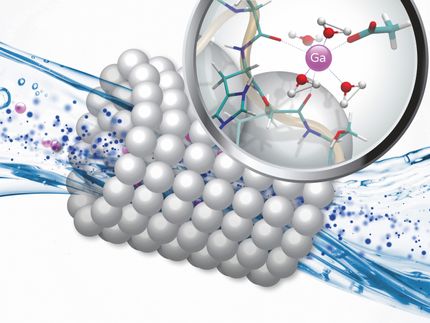Revolutionary breakthrough: bacteria help in the circular economy of rare earths
Recycling Rare Earths with biomass: Previously uninvestigated strains of cyanobacteria can adsorb metals
Rare Earth metals are essential to countless high-tech applications. Working together with the University of Applied Sciences Kaiserslautern, a research team from the Technical University of Munich (TUM) has now succeeded in recycling these valuable metals from aqueous solutions using previously uninvestigated strains of bacteria.

Prof. Thomas Brück taking samples at the photobioreactor at the Werner Siemens-Chair of Synthetic Biotechnology. The researchers used these bioreactors to produce biomass of the strains of cyanobacteria for the study.
© Andreas Heddergott / TUM
Wind power turbines, catalytic converters, optical cables and plasma monitors: They all contain Rare Earth metals. Since these 17 metal elements are indispensable to modern technologies, cost and demand are constantly rising. Minable deposits are limited and production is often difficult and harmful to the environment. Recycling these resources as efficiently as possible, for example reclaiming them from industrial waste water generated in fields such as mining, electronics and chemical catalysts, is clearly beneficial.
TUM researchers have brought these sought-after metals a great step closer to a Circular Economy: The scientists investigated several strains of cyanobacteria for their potential to adsorb Rare Earth metals from aqueous solutions – and were successful. "Another great benefit is that the process is reversible," explains Prof. Thomas Brück of TUM's Werner Siemens-Chair of Synthetic Biotechnology. "This means we can wash the metals out of the solution and then reuse the biomass."
Bacteria found in extreme habitats
Brück and his colleagues determined the potential of twelve strains of cyanobacteria for what is called "biosorption" of the Rare Earth metals lanthanum, cerium, neodymium and terbium. The majority of these strains had never been investigated in terms of their biotechnological potential. They are found in habitats with harsh environmental conditions, for example in the Namibian deserts, soda lakes in Chad, rock crevices in South Africa and polluted streams in Switzerland.
As the scientists demonstrated in laboratory testing, the cyanobacteria investigated are capable of adsorbing amounts of the Rare Earth metals equivalent to as much as ten percent of their dry mass. Lead author Michael Paper says: "The cyanobacteria biomass has a high proportion of sugar compounds with negative charges. These attract positively charged metal ions which are then bound to the biomass."
Fast and efficient
The researchers also observed that the biosorption of Rare Earth metals by cyanobacteria is even possible with low concentrations of the metals. The process is also fast: Thus for example most of the cerium contained in a solution was bound within five minutes after the reaction started.
Now, in a subsequent project the scientists plan to conduct more experiments on a larger scale in order to further improve the industrial application of the results.
Original publication
Original publication
Michael Paper, Max Koch, Patrick Jung, Michael Lakatos, Tom Nilges and Thomas B. Brück: Rare Earths Stick to Rare Cyanobacteria: Future Potential for Bioremediation and Recovery of Rare Earth Elements, Front. Bioeng. Biotechnol., Sec. Bioprocess Engineering, Volume 11 - 2023
Topics
Organizations
Other news from the department science

Get the life science industry in your inbox
By submitting this form you agree that LUMITOS AG will send you the newsletter(s) selected above by email. Your data will not be passed on to third parties. Your data will be stored and processed in accordance with our data protection regulations. LUMITOS may contact you by email for the purpose of advertising or market and opinion surveys. You can revoke your consent at any time without giving reasons to LUMITOS AG, Ernst-Augustin-Str. 2, 12489 Berlin, Germany or by e-mail at revoke@lumitos.com with effect for the future. In addition, each email contains a link to unsubscribe from the corresponding newsletter.



















































